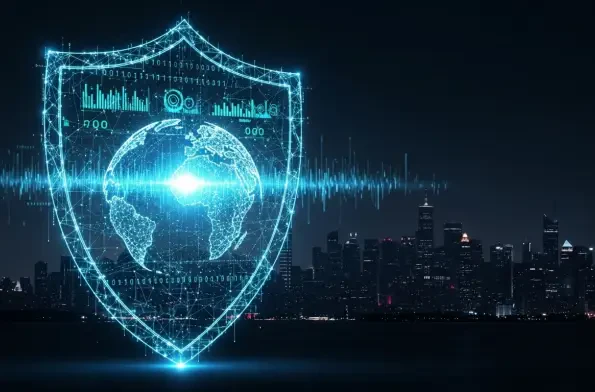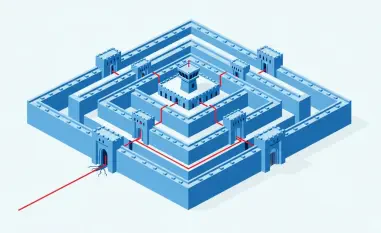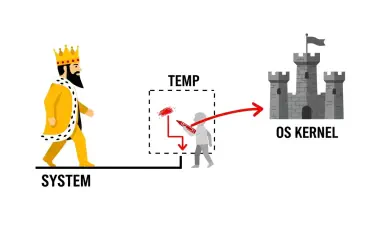Industrial Control Systems (ICS) form the backbone of the nation’s critical infrastructure, powering essential sectors like energy, water, and manufacturing. With the increasing interconnectedness of systems, cyberspace becomes a looming frontier for potential threats. The U.S. Cybersecurity and Infrastructure Security Agency (CISA) periodically issues advisories that spotlight the critical vulnerabilities threatening ICS. These advisories serve as urgent reminders of the importance of fortified ICS environments, intending to forestall debilitating cyberattacks. This review explores the multifaceted aspects of ICS cybersecurity, offering a meticulous analysis of its current and potential landscape.
Dissecting ICS Cybersecurity Fundamentals
At the heart of ICS cybersecurity lies a combination of core principles aimed at safeguarding the intricate digital controls integral to today’s industrial operations. Understanding these principles necessitates a look at the communication protocols, access controls, and continuous monitoring tools that ensure systemic robustness. Not only do these elements integrate into the operational framework of countless industries, but their resilience often dictates the seamless functionality of society’s most essential services.
The relevance of ICS cybersecurity extends beyond protecting isolated industrial networks. It encapsulates a universal imperative that spans the broad technological landscape. As industry pursuits become more digitized and automated, cybersecurity’s protective scope becomes even more paramount. The assurance of system integrity and uninterrupted functionality becomes a central tenet of technological advancement.
Unpacking the Features of ICS Cybersecurity
Identifying and Mitigating Vulnerabilities
A cornerstone of contemporary ICS cybersecurity is the ongoing identification and rectification of vulnerabilities that pervade these complex systems. The process typically involves a comprehensive audit of security infrastructures, identifying weak access points or outdated technologies that may compromise system safety. Once identified, cybersecurity professionals can develop and implement mitigation strategies that align with the evolving nature of cyber threats, ensuring fortified defenses.
Mitigating these vulnerabilities necessitates a proactive stance. Continuous adaptation of security measures, alongside the deployment of sophisticated detection systems, is pivotal. Such practices help preempt potential breaches, shielding vital infrastructure from malicious actors determined to exploit latent system weaknesses.
Collaborative Synergies and Information Exchange
The enhancement of ICS security is increasingly characterized by collaborative efforts spanning governmental agencies, industry leaders, and technological innovators. This triad serves as a crucial axis, fostering information exchange and co-developing security strategies that reflect the collective expertise of these stakeholders. By aligning resources and insights, these collaborations significantly elevate cybersecurity resilience.
Information sharing enhances threat intelligence, enabling various sectors to stay ahead of emerging threats. Promoting transparency and cooperation removes silos, leading to shared successes and collective defense against common adversaries. This consolidation of efforts is crucial as cyber threats transcend borders and industries, demanding a unified front.
Tracking Developments and Emerging Trends
In the rapidly evolving landscape of ICS cybersecurity, keeping pace with the latest technological innovations and trends is vital. Recent developments reveal a surge in advanced threat detection systems and automated security protocols that heighten defensive capabilities. Innovations like artificial intelligence and machine learning play a transformative role, offering predictive insights that enable preemptive action against potential threats.
The industry’s behavior and approach to cybersecurity are also witnessing shifts. There’s a growing acknowledgment that cybersecurity is not just an IT issue but a strategic priority involving executive oversight. As companies invest more in securing their ICS, they also bring about a culture of cyber readiness that permeates organizational structures, ensuring vigilance across all levels.
Exploring Real-World Applications and Implementation
ICS cybersecurity finds applicability across multiple sectors, each leveraging it to protect their unique operational environments. The energy sector’s reliance on ICS technology highlights the pressing need for robust cybersecurity measures to secure national grids from potential attacks. Similarly, water treatment facilities and advanced manufacturing processes rely on these protective frameworks to maintain operational integrity.
Notable implementations of ICS cybersecurity include sophisticated intrusion detection systems and real-time monitoring applications. These innovations offer a two-pronged advantage—detecting anomalies before they escalate and ensuring compliance with prevailing cybersecurity regulations, thereby safeguarding critical infrastructure assets.
Navigating Challenges and Limitations
The hurdles that confront the realm of ICS cybersecurity are multifaceted, encompassing technical challenges, regulatory compliance issues, and evolving market dynamics. For instance, the task of integrating new security technologies without disrupting existing operations remains a significant technical barrier. Additionally, aligning with intricate regulatory frameworks presents its own set of challenges.
Efforts to overcome these challenges are evident in ongoing research and development initiatives that focus on advanced encryption methods, resilience testing, and legislative advocacy for clearer cybersecurity regulations. These efforts aim to streamline ICS cybersecurity protocols, enhancing their effectiveness against a backdrop of complex industrial operations.
Anticipating Future Trajectories
The trajectory of ICS cybersecurity is poised for transformative shifts as industries prepare for an increasingly automated future. Anticipated breakthroughs revolve around sophisticated encryption technologies and seamless integration with emerging Industry 4.0 paradigms. Moreover, the potential impact on industry practices and societal norms is bound to be profound as these cybersecurity measures become embedded in infrastructural processes.
Looking ahead, the emphasis on predictive analytics and autonomous defense mechanisms is likely to redefine the cybersecurity landscape. Proactive measures and enhanced cooperation among stakeholders could catalyze unprecedented strides in protecting critical infrastructure.
Conclusion and Assessment
The analysis distilled the essence of modern ICS cybersecurity, highlighting its critical role in safeguarding national infrastructure against evolving threats. The dynamic nature of ICS cybersecurity reflects a relentless pursuit of innovation and collaboration, aiming to preempt and mitigate potential cyber threats. Progress has been made, yet the future calls for sustained vigilance, cooperative efforts, and strategic planning to ensure security in a digitally driven industrial era. As stakeholders explore advanced cybersecurity measures, the path forward requires adaptation and readiness to embrace technological advancements that promise resilience and reliability.













